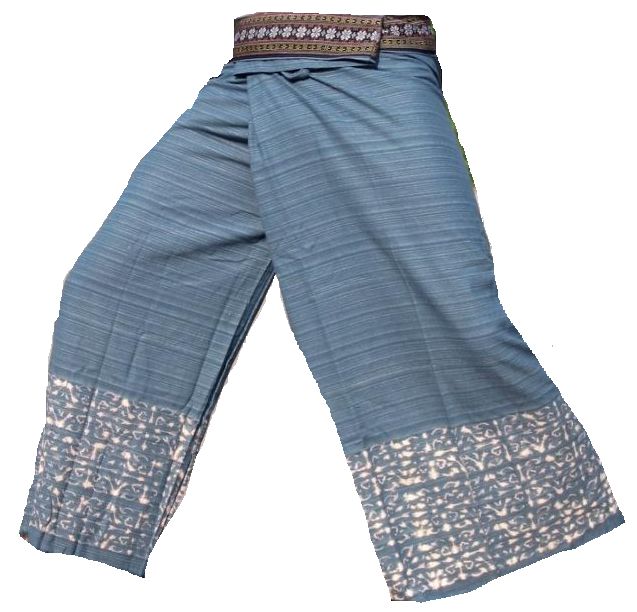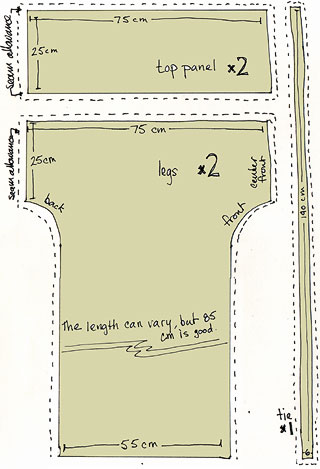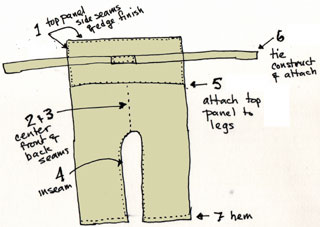Thai fisherman pants
History
Thai fisherman pants are lightweight unisex trousers that are made very wide in the waist, one size fits all. The additional material is wrapped around the waist and tied to form a belt. They are usually made of cotton or rayon. Although traditionally used by fishermen in Thailand, they have become popular among others for casual, beach, and exercise wear as well as for backpackers and pregnancy. Thai fisherman pants are nearly identical to the traditional attire of Intha males, who live on Inlay Lake of Myanmar. They are known in Burmese as Shan baun-mi.
How to make TFP
These are one-size fits-all pants that wrap around and tie with a sash. Very comfy and stylish, too. You can use almost any weight fabric—from silk to lightweight denim. The Thai ones are cotton or rayon. Make sure your fabric looks nice on both sides; I did mine with a contrasting top panel because the print I used for the legs looked ugly on the reverse.
You’ll need
- 2 meters fabric
- matching thread
- About an hour.
- top panel (2): 25 cm x 75 cm
- legs (2): 75 cm x 85 cm, with a curved 50 x 10 strip cut away on each side
- tie (1): 6 cm x 140 cm
I measured and cut directly on the fabric without a paper pattern. Don’t forget to add extra for the seams. I usually do 1 cm all around.
If you’re using fabric with a directional pattern, cut the cloth in half widthwise and turn the fabric so that the pattern runs the same direction on both legs.
- Sew the short ends of the top panel to form a large hoop. Hem one edge of the hoop.
- Sew the center front seam.
- Sew the center back seam.
- Starting at the center and working out, sew the inseam.
- Attach the top panel to the legs.
- Construct the sash and attach to the top panel at the back.
- Hem the legs.
Points:
- French seam the top panel sides so there are no raw edges.
- Finish the top panel edge with a tiny hem.
- Attached the belt securely to the center back of the top panel.
To wear them, slip them on and hold the edges out from you (like a diet “after” picture). Pull one side tight against your body and bring the rest of the fabric across yourself to form an S curve. Bring the ties around your waist and knot. Fold the top down over the ties.


